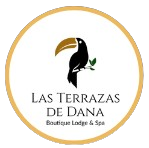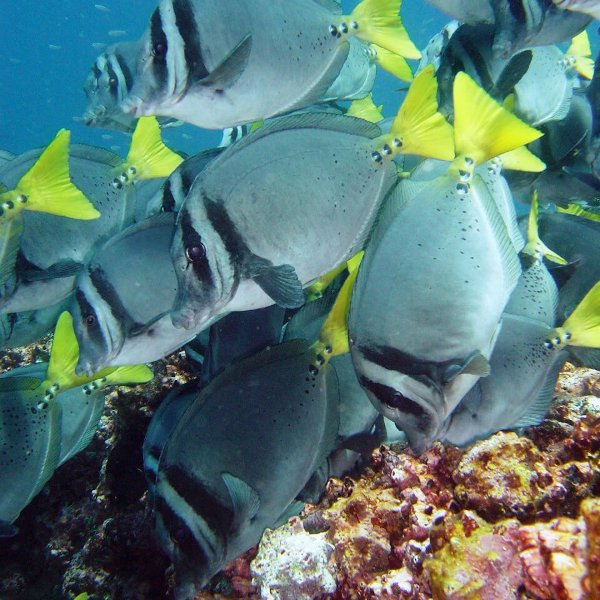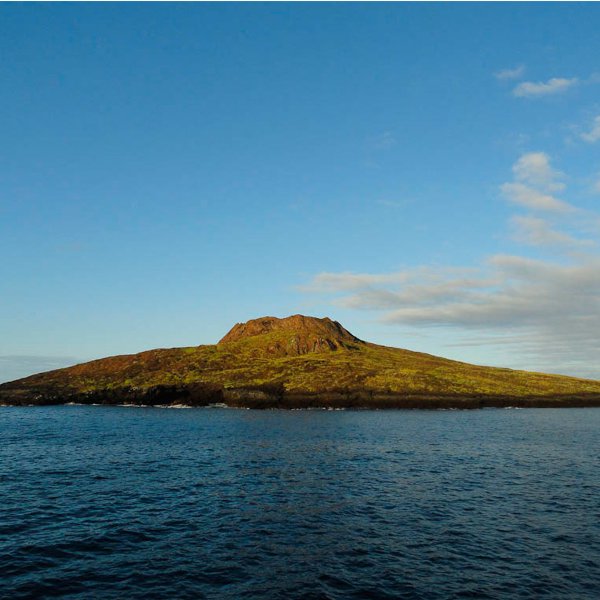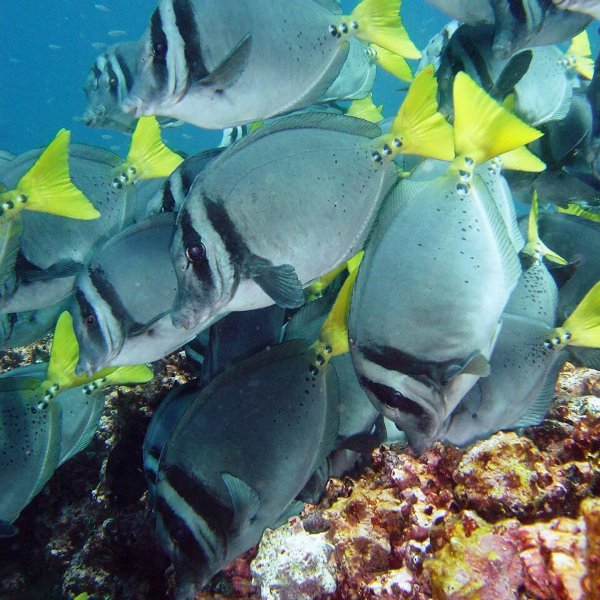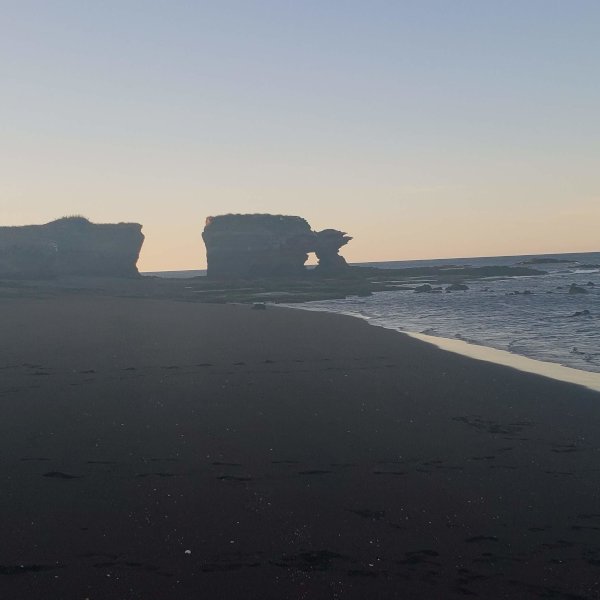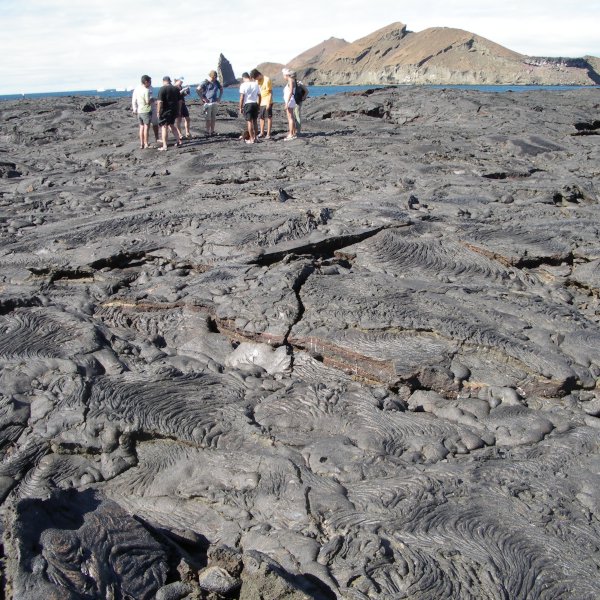Santiago
The island has a fascinating history, pirates used to stop here and treat themselves with tortoises. In the 20th century, salt was extracted on the island from a salt mine crater, first in the 1920s and then in the 1960s. There were also some attempts to colonize the island, but Santiago Island is uninhabited today.
One of Santiago Island's top attractions to see on your tour is Puerto Egas in James Bay, a visitor site with amazing rock formations and a long coastline of lava. There are two trails you can follow here, one of two miles that leads to the salt mine crater, and one that goes inland to a lagoon where you can spot flamingos. The remains of the salt mine, owned by Hector Egas, can still be seen today in the few derelict buildings still standing and some equipment. Your tour will end at the grottoes on the rocky shoreline, where you'll be able to encounter sea lions, marine iguanas and the amazing fur seals.
Buccaneer Cove, on the northwest side of the island, got its name from serving as an anchoring spot for whalers, pirates and buccaneers, who stopped here to make repairs and for the tortoise meat. The steep cliffs offer an amazing view, where you can spot herons, swallow-tailed gulls and pelicans. Its also a great spot for snorkeling, where you can swim along fur seal and sea lions. Espumilla Beach, north of Puerto Egas, is a popular white-sand beach, a nesting spot for marine turtles. By following the trail from the beach through mangroves and Palo Santo trees, you arrive to a lagoon, where you can see flycatchers, finches, Galapagos doves and mockingbirds.
Sullivan Bay offers one of the most impressive volcanic landscapes in Galapagos. From the coral beach you get to a black lava field of pahoehoe and 'a'a, two distinctive lava types. The lava flow here is the longest and biggest in the archipelago.
Sombrero Chino or Chinese Hat is a small islet southeast of Santiago Island, named after its recognizable shape, like a Chinaman's hat. Although one of the smallest islands in Galapagos, it's a wonderful place you cannot miss on your cruise. It's practically a spatter cone formed from rocks and lava as a result of a volcanic eruption. It was part of the Santiago Volcano, but in time it was separated through a channel where boats drop anchor today. From the beautiful beach, where you can see American Oystercatchers and marine iguanas, there's a trail that leads past a colony of sea lions, a lava field with lava cacti, to a stunning cliff with waves crashing below. It's a great snorkeling site as well, with calm waters, where you can encounter white-tipped reef sharks and even Galapagos penguins.
- Santiago Island has the most impressive volcanic landscape, with two types of lava, pahoehoe and 'a'a.
- The island's crater lake was formed on the spot of a former salt mine.
- Santiago Island features the longest lava flow in Galapagos.
American Oystercatcher, Blue-Footed Booby, Brown Pelican, Darwin’s Finches, Galapagos Dove, Galapagos Frigatebirds, Galapagos Fur Seal, Galapagos Green Turtle, Galapagos Hawk, Galapagos Lava Gull, Galapagos Lava Heron, Galapagos Lava Lizard, Galapagos Marine Iguana, Galapagos Mockingbird, Galapagos Penguin, Galapagos Petrel, Galapagos Sea Lion, Galapagos Sharks, Galapagos Shearwater, Galapagos Sting Rays, Great Blue Heron, Greater Flamingo, Nazca Booby, Swallow-Tailed Gull, Vermilion Flycatcher, White-cheeked Pintail, Yellow-crowned Night Heron

